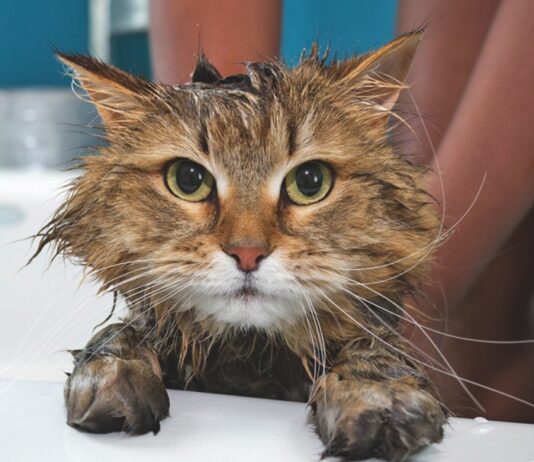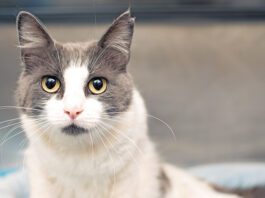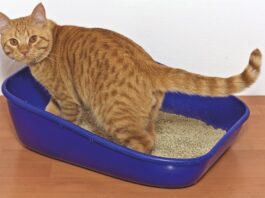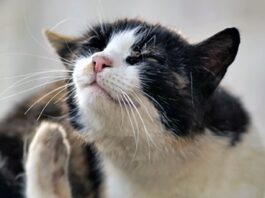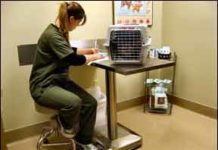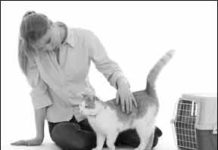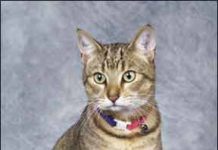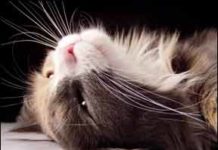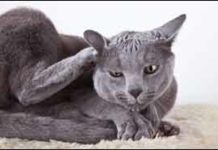Ask Elizabeth: October 2012
Toxoplasmosis is caused by the protozoal parasite Toxoplasma gondii, which requires passage through a cat to produce infective oocysts that can subsequently infect other warm-blooded animals. Cats usually acquire toxoplasmosis by eating infected prey, and approximately 20 percent of cats will begin to shed toxoplasma oocysts in their feces after ingesting toxoplasma. Oocysts in cat feces take between 24 and 48 hours to become infective for other animals, so if you are able to remove the feces from your garden within 24 hours (wearing gloves and washing hands thoroughly afterward), you will significantly decrease the likelihood of having your vegetables be a source of toxoplasma infection.
Safeguard Your Pets Against Ticks
Ticks are tenacious. They creep up tall grass, weeds and fences — waiting until a passing shadow, a vibration, an odor or even a whiff of exhaled carbon dioxide tells them a possible host might be passing by. Then they let go of their perch and fall, or reach out with their front legs to snag hold of a furry coat (or a pant leg). Once on board, they insert their mouths into their prey and begin their meal. During this feeding, tick saliva mixes with the host’s blood.
Free Cat Litter for a Worthy Cause
World’s Best Cat Litter™ recently announced that Blind Cat Rescue & Sanctuary of St. Pauls, NC was randomly selected from a fan submission to win the first round of GiveLitter™ for the year. The shelter will receive 2012 pounds of litter that will help its hardworking staff clean up after blind cats currently looking for homes.
Short Takes: March 2012
Boxiecat is a new online subscription cat litter service that can help save trips to the grocery store, and puts an end to lugging heavy bags of litter. Considering that there are 86.4 million pet cats living in the United States, this service can certainly fill the necessity for litter in a new and more convenient way — especially for the elderly or the handicapped pet owner.
Going Away? Plan for Your Pet’s Care
You have a wonderful vacation planned, a two-week escapade to a sunny island after a long year of hard work and stress. You’ve been looking forward to it for months, but a nagging problem remains: Who should take care of Tiger while you’re away? How to Decide. What you do with your cat when you take a vacation should depend on your cat’s personality, health condition, age and the resources available where you live. Hiring a pet sitter, kenneling your cat or boarding him with a veterinarian are all reasonable options for care when you aren’t home.
Going Away? Plan for Your Pets Care
You have a wonderful vacation planned, a two-week escapade to a sunny island after a long year of hard work and stress. You’ve been looking forward to it for months, but a nagging problem remains: Who should take care of Tiger while you’re away? How to Decide. What you do with your cat when you take a vacation should depend on your cat’s personality, health condition, age and the resources available where you live. Hiring a pet sitter, kenneling your cat or boarding him with a veterinarian are all reasonable options for care when you aren’t home.
Tackle (and Prevent!) Litter Box Odor
An estimated 65 million cats live in more than 30 million American households, certainly a staggering number. Equally staggering can be the offensive odors that their urine and feces can produce. Cat owners spend millions of dollars a year on products designed to reduce or eliminate these odors. The chief odor producer is the urine. Unless the perpetrator is suffering from a serious temperamental or physical disorder, the smell will be caused by perfectly normal cats relieving themselves — or expressing themselves sexually or territorially — beyond the confines of their litter boxes or in boxes that are improperly maintained.
Your Cat’s Fur as a Health Barometer
One of your favorite things about your cat is her sleek, shining fur. Lately, though, it seems like your cat has been having a bad fur day — maybe even several. Her fur looks rather unkempt. When you think about it, she hasn’t seemed very interested in grooming herself over the past couple of weeks. What’s going on? A decline in grooming, or a change in your cat’s fur, are some of the subtle signs that may indicate your cat is ill. In fact, you can view your cat’s fur as a barometer of her overall health and well-being. If you do notice a change, report it to your veterinarian so that you can take steps to start any necessary treatment quickly.
Your Cats Fur as a Health Barometer
One of your favorite things about your cat is her sleek, shining fur. Lately, though, it seems like your cat has been having a bad fur day — maybe even several. Her fur looks rather unkempt. When you think about it, she hasn’t seemed very interested in grooming herself over the past couple of weeks. What’s going on? A decline in grooming, or a change in your cat’s fur, are some of the subtle signs that may indicate your cat is ill. In fact, you can view your cat’s fur as a barometer of her overall health and well-being. If you do notice a change, report it to your veterinarian so that you can take steps to start any necessary treatment quickly.
The Importance of Claw Care
The typical cat will spend up to 18 hours a day sleeping and as much as 50 percent of its waking hours meticulously grooming itself. In addition to persistently licking its coat in order to keep it clean and free of dirt and parasites, the animal will pay special attention to its claws, which serve it well as invaluable tools and, when the need arises, as formidable weapons. "A cat in the wild uses its claws for a wide variety of purposes," says William Miller, VMD, medical director at Cornell Universitys College of Veterinary Medicine.
Ask Elizabeth: June 2011
I have had whiskers all my life, but I really took them for granted until recently. Whiskers just seemed like big, fat hairs to me! So what are they, exactly? Well, all of a cats fur grows from hair follicles in the epidermal layer of the skin. Whiskers are specially modified (big, fat) hairs that grow from very large follicles in specific locations. Of course, the most prominent whiskers are those that grow on the upper lips of the muzzle.
How to Implement Flea Control
Fleas are parasites that suck blood for their food, leaving small lesions that are similar to those of mosquito bites. "They are more than a skin problem," cautions Williams Miller, Jr., VMD, professor of clinical science at Cornells College of Veterinary Medicine. "They can become a serious health problem." Cats are fastidious groomers, so healthy adult cats will keep the number of fleas on their bodies low. "But if there is a significant number of fleas feeding on the animal, they can cause severe anemia," explains Dr. Miller.

